Maximizing fleet utilization is a strategic imperative for businesses aiming to thrive in a competitive landscape. By embracing a holistic approach that includes data-driven decision-making, route optimization, driver training, and right-sizing strategies, organizations can unlock the potential of their fleets. The result is a more efficient, cost-effective operation that directly contributes to increased productivity and revenue, providing a competitive edge in the ever-evolving business environment.
In today's rapidly evolving business landscape, fleet managers are under constant pressure to deliver results efficiently and cost-effectively. With the rise of e-commerce and globalization, the demand for transportation services has increased significantly, making it essential for fleet managers to find ways to maximize their fleet utilization. This involves effectively managing their fleet vehicles and resources to meet operational goals and drive financial performance. Fleet utilization has emerged as a crucial KPI for fleet managers, as it not only helps in controlling costs but also plays a significant role in improving productivity and generating revenue. As such, fleet managers must have a thorough understanding of fleet utilization and develop strategic approaches to achieve optimal results.
Maximizing fleet utilization requires a comprehensive approach that involves analyzing and optimizing various aspects of fleet operations. This includes monitoring vehicle usage, identifying idle and underutilized assets, and implementing effective routing and scheduling strategies. By closely monitoring these key factors, fleet managers can identify areas for improvement and make necessary adjustments to enhance fleet utilization. This not only leads to cost savings but also increases productivity by ensuring that vehicles and resources are being used efficiently. Additionally, fleet managers can also use data and technology to track and measure fleet utilization, allowing them to make data-driven decisions and continuously improve their operations. In today's competitive business environment, where efficiency is crucial, fleet managers must prioritize maximizing fleet utilization to stay ahead of the curve and drive success for their organization. This article explores the multifaceted importance of fleet utilization and outlines strategic approaches for achieving optimal results.

Maximizing fleet utilization allows for the optimization of company vehicles and assets, reducing idle time and minimizing unnecessary expenses.
Active management ensures vehicles are fully utilized, avoiding the costs associated with underutilization.
Efficient fleet utilization empowers managers to allocate resources effectively by understanding which vehicles are frequently utilized and which are not.
Informed decisions about fleet size, vehicle types, and composition prevent over-investment in unnecessary assets and ensure operational demands are met.
Fleet utilization directly impacts productivity, enabling more work to be completed within a given timeframe.
Scheduling more jobs or deliveries, improving response times, and meeting customer expectations efficiently contribute to enhanced overall operational performance.
Crucial for businesses relying on fleets for revenue generation, optimal utilization ensures the capability to handle more orders, deliveries, or services.
Fleet managers play a pivotal role in ensuring vehicles are efficiently utilized to maximize return on investment.
Fleet utilization plays a crucial role in proactive maintenance scheduling, reducing the likelihood of breakdowns or unscheduled repairs.
Avoiding unplanned downtime keeps operations running smoothly, minimizing disruptions and enhancing overall efficiency.
Proper fleet utilization contributes to safety by reducing the risk of accidents, equipment failures, and violations of load restrictions.
Monitoring and optimizing fleet utilization help prioritize safety, minimize risks, and maintain compliance with relevant laws and regulations.
Recognizing the strategic importance of fleet utilization, it is imperative for fleet managers to view their operations not merely as an aggregation of assets but as a dynamic business entity. Regardless of the industry or application, the goal is to maximize revenue produced by fleet assets, aligning with specific metrics such as lowering shipment costs, increasing revenue per route, or decreasing vehicle downtime. Viewing fleet as a business involves a shift in mindset from reactive to proactive management. This entails understanding the financial implications of every aspect of fleet management, from vehicle acquisition to disposal. It also means constantly evaluating and adjusting processes and procedures to ensure maximum efficiency and profitability. This includes monitoring and analyzing data on vehicle performance, maintenance costs, fuel consumption, and driver behavior to identify areas for improvement. By treating fleet management as a business, fleet managers can make data-driven decisions that not only benefit the bottom line but also improve overall operations and customer satisfaction.
In addition, viewing fleet as a business also requires a strong focus on customer service and satisfaction. Fleet managers must understand the needs and expectations of their clients and work towards meeting and exceeding them. This may involve providing timely and accurate delivery of goods, maintaining a reliable and well-maintained fleet, and ensuring efficient and safe transportation. By prioritizing customer satisfaction, fleet managers can improve the reputation and competitiveness of their business, leading to potential growth opportunities and increased revenue. Overall, viewing fleet as a business involves a holistic approach that not only considers the financial aspect but also the impact on customers and the overall success of the business.

Fleet managers need to adopt a multi-pronged strategy to enhance fleet productivity. Monitoring driver behavior is crucial, as it directly impacts productivity. Telematics and driver training can be leveraged to modify driving behaviors, reducing wear on tires and brakes and increasing overall fleet productivity.
Understanding actual usage is equally critical. Fleet managers should delve into the day-to-day fleet application by interacting with end-users. By aligning vehicle specifications with the fleet application, managers can avoid overloading issues that lead to additional fuel consumption, safety risks, and unnecessary wear and tear on assets.

Efficiently utilizing existing resources reduces the need for additional vehicles or assets.
Proper maintenance schedules and preventive measures can minimize unexpected breakdowns and repair costs.
Optimal fleet utilization ensures that vehicles spend more time on the road, completing tasks and generating revenue.
Real-time tracking and monitoring systems enable better task allocation, reducing idle time and enhancing productivity.
Timely and efficient deliveries enhance customer satisfaction.
Real-time tracking and communication tools allow for better transparency, enabling businesses to provide accurate delivery estimates to customers.
Regular maintenance and monitoring contribute to safer operations.
Compliance with regulations ensures that fleets operate within legal boundaries, avoiding fines and legal complications.
Utilize telematics and fleet management software to gather real-time data on vehicle performance, fuel consumption, and driver behavior.
Analyze data to identify patterns and make informed decisions on fleet optimization.
Implement predictive maintenance schedules based on real-time data and historical performance.
Address potential issues before they escalate, reducing downtime and increasing overall fleet availability.
Utilize GPS and routing software to optimize delivery routes, reducing fuel consumption and travel time.
Dynamic route planning accounts for real-time traffic conditions, further improving efficiency.
Invest in training programs to enhance driver skills and promote responsible behavior.
Engage drivers in the optimization process, encouraging them to provide insights and feedback on operational improvements.
Regularly assess the fleet's size and adjust it based on demand fluctuations.
Consider adopting flexible leasing or rental agreements to adapt to varying business needs.
Having a fleet of vehicles that is not fully utilized can lead to various negative outcomes, both in terms of finances and operations. Here are seven common repercussions that may arise:
1. Higher Expenses: Maintaining a fleet comes with fixed costs, such as purchasing, insurance, registration, and depreciation. When the vehicles are not utilized to their full capacity, these costs are divided among fewer working hours, resulting in higher expenses per unit of work.
2. Inefficient Allocation of Resources: Under-utilization means that some vehicles are not being utilized to their full potential, while others may be overworked. This leads to inefficient allocation of resources, as it can result in poor usage of capital investments and decreased productivity overall.
3. Increased Maintenance and Depreciation: Vehicles that are not used frequently may incur higher maintenance costs. Lack of regular use can cause mechanical issues, battery discharge, or other problems that arise from prolonged periods of inactivity. Additionally, under-utilized vehicles may experience accelerated depreciation due to reduced resale value.
4. Reduced Flexibility and Responsiveness: An under-utilized fleet may lack the necessary flexibility to respond to changing demands or unexpected situations. When vehicles are idle, it becomes challenging to meet sudden increases in demand or accommodate unforeseen operational needs.
5. Missed Revenue Opportunities: Low usage of vehicles means missed revenue opportunities. If the fleet is not fully utilized, the business may not be able to take on additional customers or contracts, resulting in potential revenue loss.
6. Environmental Impact: Vehicles contribute to carbon emissions and environmental pollution. An under-utilized fleet means that more vehicles may be needed to complete the same amount of work, leading to unnecessary emissions and a larger carbon footprint.
7. Employee Dissatisfaction: Under-utilization of vehicles can negatively affect employee morale and job satisfaction, especially if they see idle resources that could be used for productive tasks. It may also result in reduced job security if the company's financial performance is impacted.
Conclusion:
Maximizing fleet utilization is not just a goal; it's a strategic imperative for businesses aiming to thrive in a competitive landscape. By embracing a holistic approach that includes data-driven decision-making, predictive maintenance, route optimization, driver training, and right-sizing strategies, organizations can unlock the full potential of their fleets. The result is a more efficient, cost-effective operation that directly contributes to increased productivity and revenue, providing a competitive edge in the ever-evolving business environment.
Fleeto is a fleet management system designed to manage all aspects of a company's fleet. Fleeto enables businesses to optimize fleet performance, reduce costs, improve safety and ensure compliance with government regulations. Fleeto includes functions for fleet tracking, driver management, fuel management, maintenance scheduling, route optimization, and performance reporting. By leveraging GPS technology and real-time data analytics, Fleeto provides insights that help businesses maintain efficient operations and make informed decisions regarding their fleet.
Contact us via email at fleeto@royex.net or call us at +971-523396752. To get started with us.

In this article, we will delve into the various ways in which Fleeto optimizes vehicle performance and helps you achieve unparalleled success in your fleet operations.
Read More
This article delves into the nuances of Fleeto's Logistics Revolution, exploring how the integration of smart fleet management is not just an evolution but a revolution that is reshaping supply chains worldwide.
Read More

